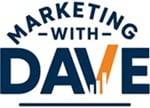Unlocking the full potential of customer data starts with understanding the core components of a Customer Data Platform (CDP). In this guide, we’re covering CDPs from A to Z—or in this case, from Activation to Zero-Party Data—breaking down the essential concepts that help businesses unify, analyze, and activate their data for smarter marketing and better customer experiences. Whether you’re evaluating a CDP or optimizing an existing one, these are the key insights that set data-driven organizations apart.
A
Analytics Analysis
The systematic examination of data to uncover trends, patterns, and insights, enabling informed decision-making and business optimization.
B
Business Intelligence
The process of collecting, analyzing, and visualizing data to support strategic decisions, improving efficiency and competitive advantage.
C
Collection of Data
The process of gathering structured and unstructured information from various sources, forming the foundation for meaningful analysis.
D
Descriptive and Inferential Statistics
Descriptive statistics summarize data trends, while inferential statistics draw conclusions and make predictions about larger populations from sample data.
E
Extract, Transform, Load (ETL)
A process that moves data from multiple sources, cleans and structures it, and loads it into a system for analysis, ensuring consistency and usability.
F
Forecasting
The practice of using historical data and statistical models to predict future trends, helping businesses plan ahead and mitigate risks.
G
General Algorithms (e.g., Logistic Regression & Gradient Boosting)
Mathematical models used in data analysis and machine learning to make predictions, classify data, and optimize decision-making.
H
Hyperparameters
Adjustable settings in machine learning models that control how algorithms learn, significantly impacting accuracy and performance.
I
Independent & Dependent Variables
In statistical modeling, the independent variable influences or predicts changes in the dependent variable, forming the basis for data-driven insights.
J
JSON (JavaScript Object Notation)
A lightweight, human-readable data format used to store and exchange structured data between applications, commonly used in APIs and databases.
K
K-Means & Other Clustering
Machine learning techniques that group similar data points together, helping identify patterns and segment customers, behaviors, or anomalies.
L
Learning (Supervised, Unsupervised, Reinforcement)
Categories of machine learning where supervised learning maps inputs to outputs, unsupervised discovers hidden patterns, and reinforcement learns through feedback loops.
M
Methodology
A structured framework for conducting data analysis, ensuring consistency, accuracy, and reliability in extracting actionable insights.
N
Natural Language Processing (NLP)
A field of AI that enables machines to understand, interpret, and generate human language, powering chatbots, sentiment analysis, and search engines.
O
Organization (Structured & Unstructured Data)
The classification of data where structured data is formatted and easy to query, while unstructured data (e.g., text, images) requires advanced processing for insights.
P
Python
A widely used programming language in data science and analytics due to its extensive libraries, ease of use, and powerful capabilities for automation, visualization, and modeling.
Q
Quantitative & Qualitative Data
Quantitative data is numerical and measurable, while qualitative data captures descriptive attributes, both essential for comprehensive data-driven decisions.
R
Regression Analysis
A statistical method for modeling relationships between variables, commonly used to predict trends and measure the impact of different factors.
S
Scrubbing of Data
The process of cleaning raw data by correcting errors, removing duplicates, and standardizing formats to improve analysis accuracy.
T
Transparency of Data Collection
The practice of clearly communicating how data is gathered, used, and protected, fostering trust and ethical decision-making.
U
Unknown & Unmined Patterns
Hidden trends, correlations, or anomalies within large datasets that advanced analytics and machine learning can uncover to drive innovation and competitive advantage.
V
Volume, Variety, Velocity, Value & Veracity (5 Vs of Big Data)
The core characteristics defining big data, influencing how it is processed, analyzed, and leveraged for decision-making.
W
Warehouse (Data Warehouse)
A centralized system that stores and integrates data from multiple sources, enabling efficient querying and reporting for business intelligence.
X
X-Axis
The horizontal axis on a graph that typically represents independent variables or time, providing context for data visualization.
Y
Y-Axis
The vertical axis on a graph that usually represents dependent variables or measured outcomes, helping interpret relationships in data.
Z
Z-Score
A statistical measurement that indicates how many standard deviations a data point is from the mean, useful for detecting outliers and standardizing data comparisons.
